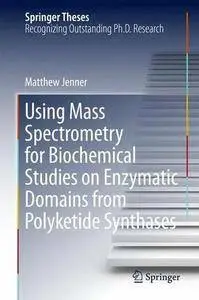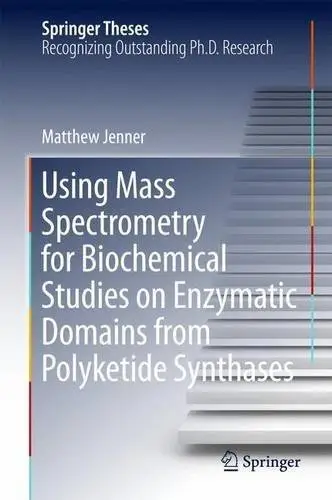Using Mass Spectrometry for Biochemical Studies on Enzymatic Domains from Polyketide Synthases
Springer | Analytical Chemistry | May 29, 2016 | ISBN-10: 3319327224 | 176 pages | pdf | 14 mb
Springer | Analytical Chemistry | May 29, 2016 | ISBN-10: 3319327224 | 176 pages | pdf | 14 mb
Authors: Jenner, Matthew
Nominated as an Outstanding Ph.D. thesis by the University of Nottingham
Describes novel use of intact MS for the study of enzyme acylation and elongation
Comprehensive and accessible review of trans-AT PKS enzymology
Majority of thesis published in high-impact journals
This thesis reports studies on the substrate specificity of crucial ketosynthase (KS) domains from trans-AT Polyketide Synthases (PKSs). Using a combination of electrospray ionisation-mass spectrometry (ESI-MS) and simple N-acetyl cysteamine (SNAC) substrate mimics, the specificity of a range of KS domains from the bacillaene and psymberin PKSs have been succsessfully studied with regard to the initial acylation step of KS-catalysis.
In addition, the ability to alter the substrate tolerance of KS domains by simple point mutations in the active site has been demonstrated. A series of acyl-ACPs have been synthesised using a novel methodology and employed to probe the substrate specificity of both KS domains and the previously uncharcterised acyl hydrolase domain, PedC.
KS-catalysed chain elongation reactions have also been conducted and monitored by ESI-MS/MS. All KS domains studied exhibited higher substrate specificity at the elongation step than in the preceeding acylation step. Furthermore, a mechanism of reversible acylation is proposed using the PsyA ACP1-KS1 di-domain. The findings in this thesis provide important insights into mechanisms of KS specificity and show that mutagenesis can be used to expand the repertoire of acceptable substrates for future PKS engineering.
Number of Illustrations and Tables
37 b/w illustrations, 99 illustrations in colour
Topics
Mass Spectrometry
Enzymology
Biochemical Engineering
Medical Biochemistry
Click Here to Buy the Hardcover from Springer
Click Here for More books



